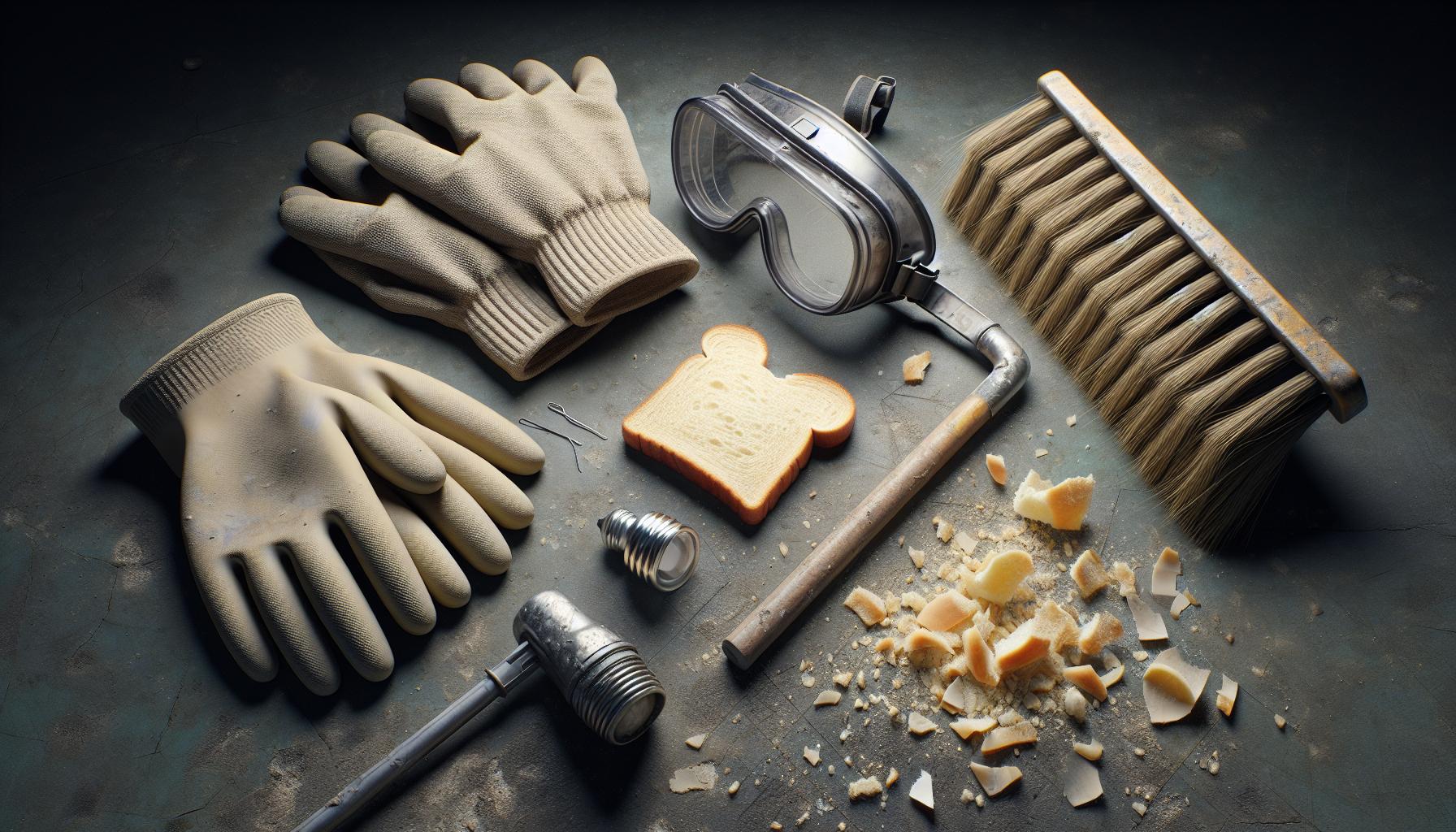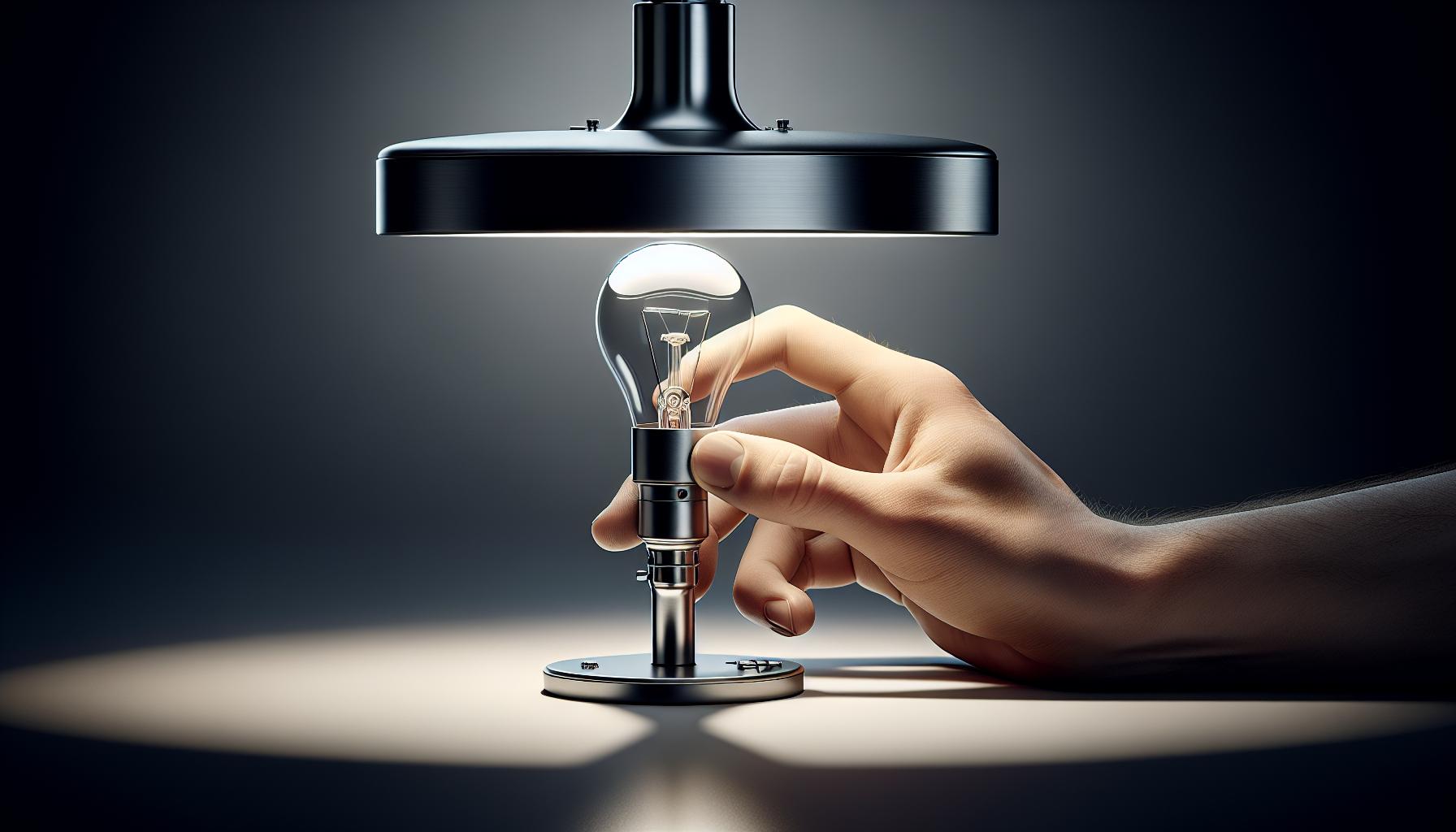Oh no, you’ve just heard that dreaded pop and tinkle of glass — your light bulb has exploded! It’s not something you encounter every day, but when it does happen, it can leave you a bit flustered. Don’t worry, you’re not alone in this electrifying predicament.
First things first, let’s keep calm. You’re about to navigate this little hiccup like a pro. Safety’s our top priority, so you’ll want to handle this with care. Ready to tackle the cleanup and get your room shining bright again? Let’s get started.
Assessing the situation
When you’re faced with a light bulb explosion, your safety is paramount. Before jumping into action, take a breath and assess the situation carefully. Check if there’s any fire or smoke, which could indicate a more serious electrical issue. If there is, leave the area immediately and call 911. However, if things seem stable, shut off the power to the affected area at your circuit breaker to prevent any further risk of electrical hazards.
Now take a look around to determine if the glass has spread across a wide area. A blown bulb can send shards flying in all directions, so pinpoint where the debris has landed. It’ll be crucial for the cleanup process. If you have pets or children, make sure they are kept away from the area to avoid injury.
Inspect the light fixture next. If the bulb base is still stuck in the socket, don’t attempt to remove it with bare hands. You’ll need the proper tools for this task to avoid cutting yourself or causing further damage to the fixture.
Once you’ve assessed the immediate dangers and taken the necessary precautions, you’re ready to move on to cleaning up. Be mindful of how you’ll dispose of the glass; it’s not your ordinary waste. You’ll need to ensure it’s wrapped or placed in a secure container so as not to harm sanitation workers.
Remember, when planning your next steps for cleanup, having the right equipment at hand like heavy-duty gloves and goggles can make all the difference. This precaution helps you to avoid personal injury and makes the cleanup process a lot smoother. Keep in mind, meticulous attention to detail is essential in ensuring that no small pieces of glass remain that could cause harm down the line. With your DIY expertise and a careful approach, you’ll have your space safe and well-lit again in no time.
Safety precautions
When a light bulb explodes, your safety is the paramount concern. Before you roll up your sleeves and get to work, make sure you’re well-equipped for the job. Wear thick gloves to protect your hands from sharp fragments. Trust me, it’s a simple step that can spare you a lot of pain. It’s also smart to put on safety goggles—those tiny glass shards can be treacherous, and your eyes are priceless. Long sleeves are your friends in this scenario, too. They can provide an extra layer of protection from potential cuts.
Let’s talk about the aftermath of an explosion. Survey the scene carefully before diving into the cleanup. You’ll want to spot larger pieces of glass to pick up manually—those can be tricky to catch with a broom. When dealing with smaller pieces, use a broom and a dustpan to gently sweep them up. A slice of bread or a piece of duct tape can be surprisingly effective in picking up the almost invisible splinters.
Here’s a pro tip: avoid using a vacuum cleaner right away. Those small glass pieces can damage the machine or pose a risk later when emptying it. But if you must, ensure you’re using a shop vac designed to handle sharp objects.
Lastly, once the visible glass is gone, wipe down the area with a damp paper towel or cloth to capture any remaining minuscule particles. For carpets, a rolled-up piece of sticky tape can lift out embedded fragments.
Remember, electricity and metal don’t mix. Ensure the power is off before extracting the remaining base of the bulb. You might find pliers particularly handy for this task but be cautious. Grip firmly and turn counterclockwise. If you’re not confident or the base feels lodged in, it’s wise to call a professional.
Lights are meant to brighten up your life, not endanger it. Keep these tips in mind, and you’ll handle broken bulbs like a pro, keeping your home safe and illuminated without any hiccups.
Cleaning up the mess
« Do Rechargeable Light Bulbs Need to Be On to Charge? Maximize Their Life Now
Are Light Bulbs E-Waste? Discover Proper Disposal Methods »
After a light bulb explodes, the immediate priority is making your space safe again. Begin by turning off the power to the fixture. This ensures that you can safely tackle the clean-up without the risk of electrical hazards.
Prepare to clear the debris. Equipping yourself with safety gear is crucial. Don your gloves and goggles as mentioned earlier, and make sure to wear long sleeves to protect your skin. Start by picking up the larger fragments of glass, placing them carefully into a paper bag or a container that you can seal before disposal.
Surprisingly, bread can be your best friend during clean-up. Press a slice gently onto the floor to pick up tiny shards of glass that are difficult to see. Bread’s soft texture makes it perfect for capturing those minuscule pieces that brooms or vacuums might miss. Just remember, after you use it, the bread should be disposed of safely.
For any remaining tiny particles, use a sticky tape such as duct tape or masking tape. Pat the area where the glass shattered to lift off any leftover debris. This simple trick works wonders and helps ensure you’ve cleared the area thoroughly.
When dealing with glass on carpet or a rug, consider using a soft brush attachment on your vacuum cleaner to gently remove any embedded shards. Be meticulous and go over the area multiple times from different directions to ensure no glass is left behind.
Lastly, wiping down hard surfaces with a damp paper towel will remove any lingering dust or tiny glass particles. Be sure to dispose of the towel immediately afterward to avoid any risk of injury.
Once the area is visibly clear, it’s worth checking your surroundings one more time. Lighting can be deceptive—what seems like a clean surface might still harbor tiny glass pieces that catch the light differently at various times of the day. Therefore, allow natural light to aid in a final inspection before declaring the area safe.
Replacing the light bulb
Once the area is meticulously cleared of glass, you’ll be ready to move on to the task of replacing the light bulb. Preparation is the key to a smooth transition from an old, damaged bulb to a bright, functioning one. Start by ensuring the light switch is in the off position to avoid any electrical hazards.
Selecting the Right Bulb
Before heading to the store or searching online, take note of the bulb’s specifications, including wattage, size, and base type. Light bulbs come in various shapes and sizes, and using the wrong type can be inefficient or even harmful to your fixture. Consider LED bulbs for their long lifespan and energy savings; they’re a smart choice for both your wallet and the environment.
Installation
Installing the new bulb is usually straightforward, but there’s no harm in double-checking the manufacturer’s guidelines. Fit the base of the new bulb into the socket, turning it clockwise until it’s secure. Do not apply too much force, as this could damage the new bulb or the fixture. When it’s seated properly, you can flip the switch and test your work.
Pro Tips for a Brighter Home:
- Look for bulbs with a “warm” color temperature for living areas to create a cozy atmosphere.
- “Cool” light bulbs work best in task-oriented areas, like kitchens or home offices.
- If your fixture is enclosed, make sure the bulb is rated for it; some LED bulbs require ventilation.
With your new bulb in place, you’ll once again have reliable lighting that can enhance both the functionality and the ambience of your space. Embedding innovation and design into your lighting choices not only adds character to your home but can also contribute to energy efficiency and cost savings in the long-term. Enjoy experimenting with different light setups that reflect your own style and preference.
Preventing future accidents
When you’re dealing with light bulbs, prevention is just as important as knowing how to handle an explosion. By taking a few simple measures, you can minimize the risk of a bulb shattering and ensure your home lighting is both safe and reliable.
Regular Maintenance
Don’t overlook the power of routine checks! It’s easy to forget about the bulbs that brighten your rooms every day, but giving them some attention can prevent mishaps.
- Inspect your light fixtures periodically.
- Ensure that bulbs are securely fastened.
- Check for signs of wear or damage in both bulbs and fixtures.
Quality Over Cost
While it’s tempting to go for budget options, investing in higher-quality bulbs can significantly reduce the risk of accidents.
- Choose reputable brands known for their durability.
- Consider LED bulbs that are not only energy-efficient but also sturdier than traditional options.
- Look for bulbs with a safety coating that contains the glass in case of breakage.
Proper Wattage and Fixtures
Mismatched bulb wattage and fixtures are a common cause of bulb explosions. Here’s how to keep them in harmony:
- Always match the wattage of the bulb with the maximum wattage recommended for the fixture.
- Use the appropriate bulb type for each specific fixture.
Be Climate Conscious
Extreme temperatures can be an enemy to light bulbs. They can either shorten bulb lifespan or cause immediate breakage.
- Avoid installing bulbs near sources of excessive heat or cold.
- Consider bulbs designed for outdoor use if temperature fluctuations are a concern.
Installation Wisdom
- Turn off the power before replacing a bulb.
- Use a stable step ladder when reaching for high fixtures.
- Be gentle—overtightening can damage both the bulb and the socket.
Conclusion
Handling a light bulb explosion can be a bit startling but now you’ve got the know-how to tackle it safely and efficiently. Remember, it’s all about keeping calm and putting your safety first. With the simple steps you’ve learned, you’ll have that mess cleared up in no time. And don’t forget, a little prevention goes a long way. By choosing the right bulbs and giving them the care they deserve, you’re setting yourself up for a brighter, safer home. Here’s to lighting up your space without any unexpected surprises!
Frequently Asked Questions
What should you do immediately after a light bulb explodes?
Immediately after a light bulb explodes, you should turn off the power to that section of your home to prevent any electrical hazards. Then, evacuate the area to avoid potential injury from the broken glass.
What are the safety precautions for cleaning up a broken light bulb?
When cleaning up a broken light bulb, wear gloves to protect your hands from sharp edges, use a broom and a dustpan to sweep up the pieces, and avoid using a vacuum as it could spread the glass. Dispose of the pieces in a sealed container.
How can I prevent future light bulb explosions?
Prevent future light bulb explosions by performing regular maintenance, using bulbs with the correct wattage for your fixtures, and avoiding exposing bulbs to extreme temperatures.
Why is it important to match the wattage of the bulb to the fixture?
Matching the wattage of the bulb to the fixture is important to prevent overheating the bulb, which can lead to explosions or reduced bulb lifespan.
What are the benefits of investing in higher-quality or energy-efficient lighting options?
Investing in higher-quality or energy-efficient light bulbs can lead to a brighter home, reduced energy costs, and a lower risk of accidents due to superior design and materials.





